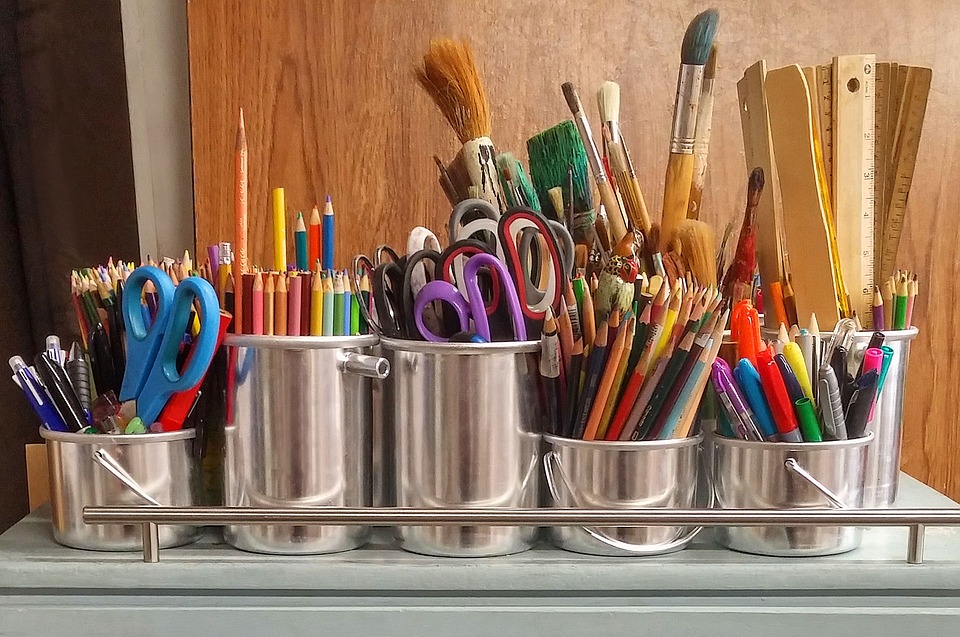Click here for the PDF version of this article
 My earliest memory of experiencing the arts is with my grandmother. I was three or four years old, and when I sat next to her on her piano bench, I would be taken to another place. “How do you get it to sound like that?” I’d ask her time and again. “You hear it,” was her reply. “But how do you know which keys to play? How do your fingers know where to go?”
My earliest memory of experiencing the arts is with my grandmother. I was three or four years old, and when I sat next to her on her piano bench, I would be taken to another place. “How do you get it to sound like that?” I’d ask her time and again. “You hear it,” was her reply. “But how do you know which keys to play? How do your fingers know where to go?”
My grandmother, if born in a different place, or if chance had brought her there, could have kept musical company with the likes of those in the halls of Juilliard.
Some classified her as a musical prodigy. She had perfect pitch, and although she couldn’t read music and never received formal training, she played by ear. I can still visualize her at her piano. I can remember watching her play the organ, accordion, ukulele and even attempt the guitar. I never witnessed her playing her banjo but, in her younger days, that was her instrument of choice when she played in a local band. She would tell you that those were the best days of her life; the days she played with her bandmates.
What did this mean for her as a small town girl in rural Iowa, the progeny of generations of farmers? In 1923 at 11 years of age, on icy country roads returning from a celebration, her family’s Model T got into an accident; her mother and baby brother died from their injuries. Because there were siblings to tend to and a farm and household to help manage, her formal education ended with her 8th grade graduation. Was she intellectually curious and driven? You bet. Through humility and hard work, she and my grandfather were pillars and leaders in their community.
My grandmother was masterful in her application of music. With each piece she played, I saw how music transported her to another place and time. I saw how it soothed her. I understand those experiences, because music has the same effect on me. While I have always dreamed of playing the piano, the multiplicative factors that must come into play to make that a reality, such as time, luck and environment, did not align for me. Yet, I definitely inherited my grandmother’s love for and appreciation of music.
 Arts education is dismissed as unnecessary in many schools today. Sometimes I wonder how our definition of success in the educational system has become so narrow. The system currently seems to appreciate only a certain type of individual; an individual who achieves verbally or mathematically. And, with that, an individual who doesn’t achieve too much more than what is expected in that grade level. Many of our children respond to that dangling carrot and produce at rates that seem remarkable on paper, but at what cost? What would our world look like if all of our children excelled in only those two core areas, at the expense of other domains?
Arts education is dismissed as unnecessary in many schools today. Sometimes I wonder how our definition of success in the educational system has become so narrow. The system currently seems to appreciate only a certain type of individual; an individual who achieves verbally or mathematically. And, with that, an individual who doesn’t achieve too much more than what is expected in that grade level. Many of our children respond to that dangling carrot and produce at rates that seem remarkable on paper, but at what cost? What would our world look like if all of our children excelled in only those two core areas, at the expense of other domains?
How will life play out for our children when they only learned to achieve in response to external rewards, and not to develop their own natural, intrinsic passions and interests?
When people think of artistic talent, they typically think of individuals who perform at high levels; the rich and famous artists. Many parents decide this type of exposure, for performance results, is worth investing time and money to develop the budding performing artist in their children. We also see, as with many activities forced upon children with the best intentions, this approach can backfire. We are so conditioned by the notion that if we invest our time and money into an activity for our children, they better practice consistently and work hard and produce, or we will cease to allow them participation in that activity.
What about exposure to the arts for the sheer joy and pleasure of what the arts can bring? Would we be willing to invest the same amount into our children’s experiences knowing there will be no objective, measurable outcome? Is the subjective experience and enhancement of beauty enough for us? What if our goal could be the aesthetics of art; the relationship between the arts and the person experiencing the arts, as much as the goal of supporting the development of children who demonstrate artistic talents?
 Most lessons for children prioritize drill and mastery before enjoyment. We lose many children’s interest with this approach. Could we expose children to rich artistic experiences for them to interact with in a way that is for nothing more than pure pleasure and enjoyment? Could we allow the child to process what the experience means for him, and trust the child to facilitate the next steps in his growth? When an emotional connection is made, the child’s natural curiosity and engagement will drive the process.
Most lessons for children prioritize drill and mastery before enjoyment. We lose many children’s interest with this approach. Could we expose children to rich artistic experiences for them to interact with in a way that is for nothing more than pure pleasure and enjoyment? Could we allow the child to process what the experience means for him, and trust the child to facilitate the next steps in his growth? When an emotional connection is made, the child’s natural curiosity and engagement will drive the process.
What other cognitive and non-cognitive factors might this approach develop in the growing child? Intrinsic motivation, emotional intelligence, social and cultural interaction, empathy, compassion, persistence and task commitment all come to mind. These are all currently areas of prime concern within our educational institutions and parenting practices, and the arts could serve as a catalyst to teaching these skills.
When considering three domains of the arts: music, tactile arts, and theater, these areas involve different physical and perceptual abilities. Teachers and parents can assist students in developing the cognitive skills needed to enhance their growth in these areas. The mind is constantly developing, abilities are not static, and students can be taught specific skills. Some children may have natural gifts for the arts, but we must also emphasize to students who want to learn that the mind is also receptive to change from deliberate practice. And, if a child exhibits a natural talent, it does not mean that he doesn’t require instruction and practice, just as with any other domain.
Children go through stages of development in all domains, and research supports that early childhood is a time for exposure and playful interaction with all types of artistic media; children should explore as many different forms of art and music as possible. This will help lead children to an understanding of performance possibilities and a chance to explore their expressive abilities.
As mentioned in Psychological Foundations of the Arts: Understanding and Encouraging Artistic Expression in the Early Grades, artists tend to be more aesthetic, creative, curious, imaginative, sensitive, original and open to experiences. And, artists are also usually less conventional, rigid, and socialized, meaning they are more likely to challenge convention. While these traits may sometimes be interpreted as negative, they can also be positive, adaptive traits for individuals, especially those who perform and create professionally. As parents, we all know that a non-conforming, strong-willed child can be exhausting and difficult to parent, but these same qualities can be an asset to our children as they navigate the tricky terrains of adolescence, peer pressure, and finding their way into adulthood.
 Current research cannot decisively state whether these traits are already present in individuals who likely become artists, or if being an artist promotes these personality traits.
Current research cannot decisively state whether these traits are already present in individuals who likely become artists, or if being an artist promotes these personality traits.
Leadership in arts education is needed more than ever in our communities. In Leadership in Art Action: Taking Action in Schools and Communities, Kerry Freedman mentions that the arts contribute to our children’s cultural knowledge, social and personal identities, visual literacy and the creative economy. By forming alliances with administrators, educators, parents and community members, we can advocate for the arts in order to nurture a shared vision for growth in our schools and to cultivate new ideas and practices.
Human beings have integrated the arts into their cultures and societies for thousands of years. By providing exposure to the arts we can capture the budding artist, encourage personal expression and creative performance, and expose children to the arts simply for the joy of enriching their lives.
Ann Smith serves as Parent Chair on the executive board of directors for California Association for the Gifted, and she previously served two terms as Parent Representative for the Bay Area Region. Ann is Executive Director of Gifted Support Center in San Mateo, CA, which offers assessments, consultations, support groups and resources for parents of gifted children.
Click to return to the GEC Fall 2016 Table of Contents
References
Miller, Erin Morris, and Rachael Sloan. Psychological Foundations of the Arts: Understanding and Encouraging Artistic Expression in the Early Grades (Nagc Select Series). Charleston, SC: National Association for Gifted Children, 2014.
Freedman, Kerry. “Leadership in Art Action: Taking Action in Schools and Communities.” Home • National Art Education Association. Art Education, Mar. 2011. Web. 20 Dec. 2015.